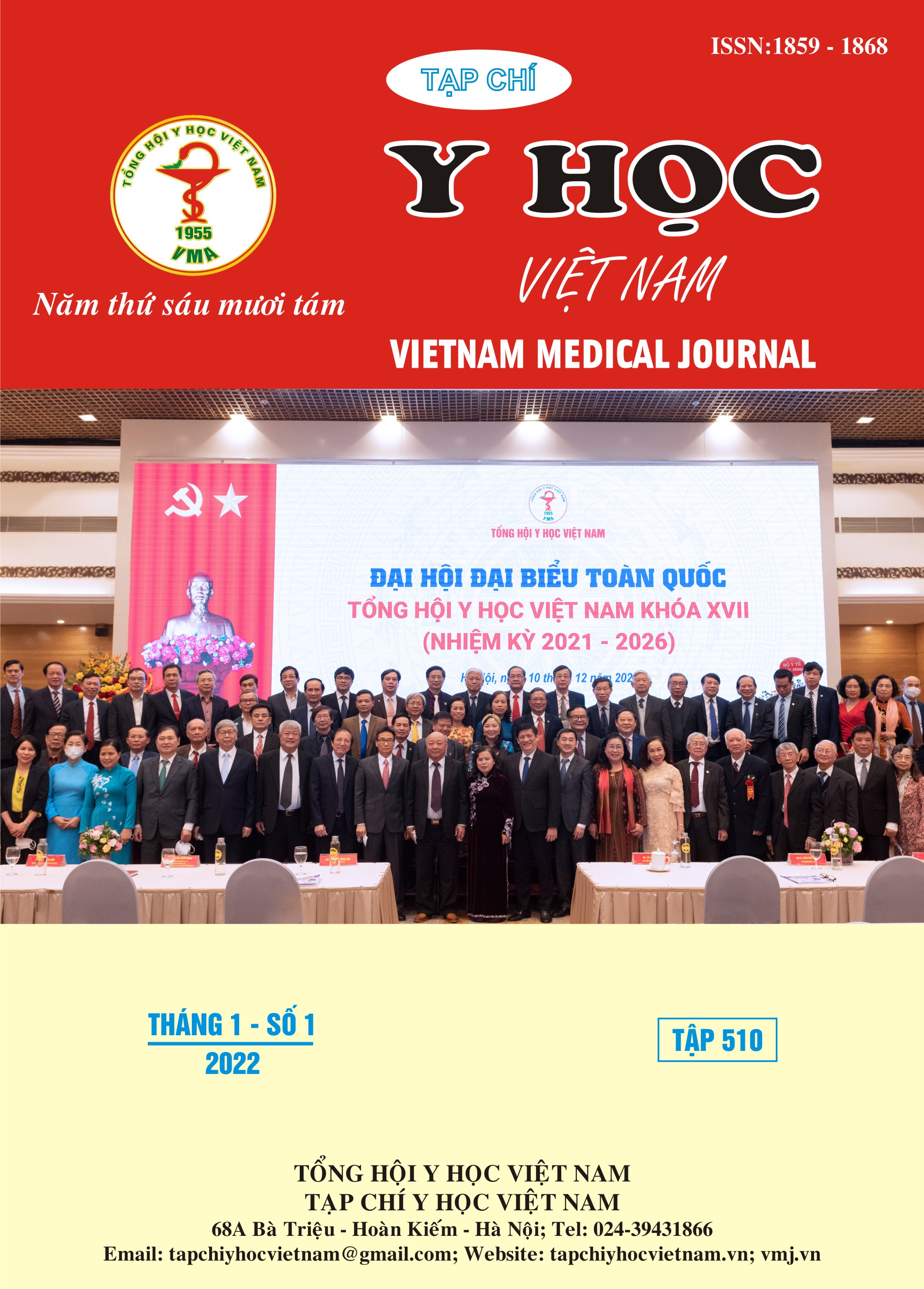RISK FACTORS AND CORONARY ARTERY CALCIFICATION ON 256 SLIDE CT-SCANNER
Main Article Content
Abstract
Objectives: study some risk factors related to coronary artery calcification (CAC) on CT-256 slices. Subjects and methods: a cross-sectional descriptive study of coronary angiogram on CT 256 slices from March to July 2021. Results: total 545 patients, including 261 male and 264 female. Median age was 72 years (63-79), from 39 to 100 years old; in which the median age of male is 71 years old (60-79) lower than that of female, 73 years old (65-80) (p<0.01). Regarding the risks, men were more likely to drink alcohol (24.1%) than women (1.8%) with an odds ratio: 17.8 [95% CI: 7.0-44.9] (p<0.01). On the other hand, the percentage of men who smoking (20.3%) was also higher than that of women (2.1%) with odds ratio: 11.8 [95%CI =5.0-28.0 ] (p<0.01). On CT 256 slices, there were 341 patients with CAC, accounting for 62.6%. The incidence of CAC in 60-years-old and over group (70.2%) was higher than in the younger group (31.1%) (p<0.01), multivariable regression odds ratio was 6,0 [95%CI: 3.7 – 9.9] (p<0.01). Men had a higher rate of CAC (67%) than women (58.5%) (p=0.04), in which the odds ratio of multivariable regression was 1.8 [95%CI: 1 ,2-2,7] (p<0.01). Moreover, the hypertensive patients had a higher rate of CAC (69.4%) than the nortensive group (55.8%), the univariate odds ratio was 1.8 [1.3- 2.5] (p<0.01), and the prevalence of CAC in diabetic patients (74%) was higher than in patients without diabetes (60.1%) with univariate odds ratio of 1,8 [1,2-3,1] (p=0.01). However, these two factors were not found to be significantly related to CAC in the results of multivariable regression analysis (p>0.05). Conclusion: Coronary artery calcification is significantly related to age, gender, high blood pressure and diabetes.
Article Details
Keywords
coronary artery calcification, CT-256 slices, risk factors
References
2. L. S. Jamjoum, L. F. Bielak, S. T. Turner et al. (2002). Relationship of blood pressure measures with coronary artery calcification. Med Sci Monit, 8(12), Cr775-81.
3. H. H. Oei, R. Vliegenthart, A. Hofman et al. (2004). Risk factors for coronary calcification in older subjects. The Rotterdam Coronary Calcification Study. Eur Heart J, 25(1), 48-55.
4. Emil M. deGoma, Joshua W. Knowles, Fabio Angeli et al. (2012). The evolution and refinement of traditional risk factors for cardiovascular disease. Cardiology in review, 20(3), 118-129.
5. A. R. Folsom, G. W. Evans, J. J. Carr et al. (2004). Association of traditional and nontraditional cardiovascular risk factors with coronary artery calcification. Angiology, 55(6), 613-23.
6. R. L. McClelland, H. Chung, R. Detrano et al. (2006). Distribution of coronary artery calcium by race, gender, and age: results from the Multi-Ethnic Study of Atherosclerosis (MESA). Circulation, 113(1), 30-7.
7. A. Jeevarethinam, S. Venuraju, A. Dumo et al. (2017). Relationship between carotid atherosclerosis and coronary artery calcification in asymptomatic diabetic patients: A prospective multicenter study. Clin Cardiol, 40(9), 752-758.
8. K. Nasir, J. Rubin, M. J. Blaha et al. (2012). Interplay of coronary artery calcification and traditional risk factors for the prediction of all-cause mortality in asymptomatic individuals. Circ Cardiovasc Imaging, 5(4), 467-73.


